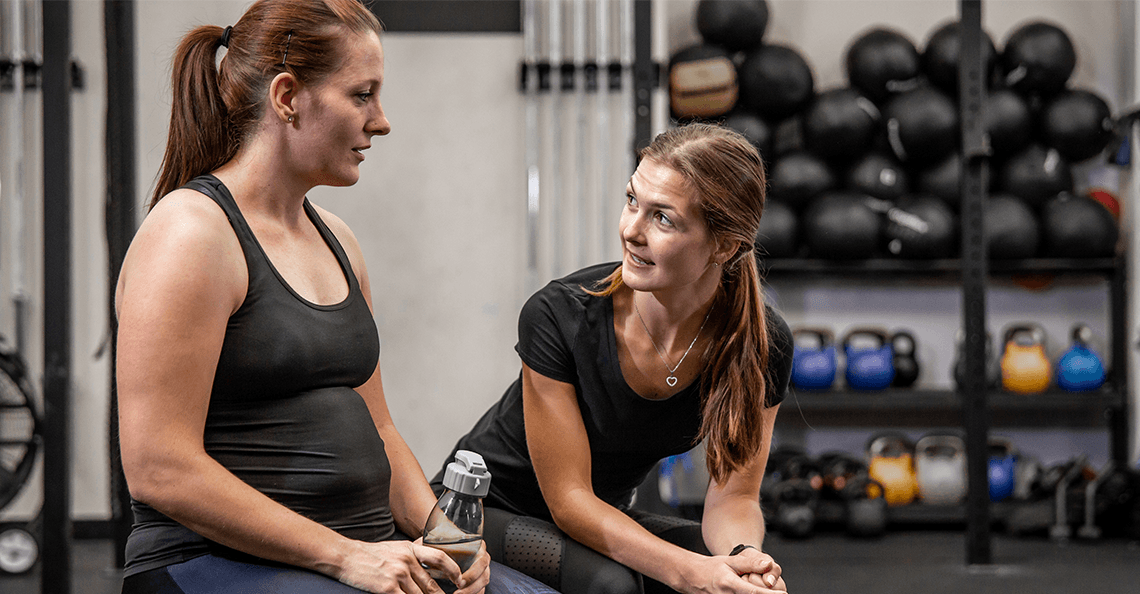What comes to mind when you think of a part-time trainer? Chances are, it’s someone who teaches Zumba classes for $20 an hour—a perfectly respectable gig, but probably not someone you’d consider a professional coach, much less a fitness expert.
We reserve those designations for full-time trainers and coaches, who spend their days “in the trenches,” working long hours with clients and athletes.
That’s certainly the most common way to succeed in the fitness industry, and I firmly believe every personal trainer should work full-time for at least a couple of years. You have to get your reps in.
But if full-time training was the only option for a rewarding career, I would’ve left the industry a long time ago.
Instead, I’ve been a part-time personal trainer and strength and conditioning coach for 10 years and counting, following two full-time years in the gym.
I’m lot alone. Lots of talented trainers and coaches work part-time, for lots of reasons. For parents of young children, it’s a way to balance work and family. For others, it’s a way to pursue a passion for training without depending on it for their living. And for some, like me, it’s a way to have complementary careers as a trainer and writer.
I’ll start there, with the benefits I get from training part-time, and then talk about how you can combine two passions without compromising either one.
Four benefits of part-time coaching
I split my time as a coach (30 percent of my income) with being a health, fitness, and nutrition writer (70 percent of my income). Without coaching, the rest of my life wouldn’t be nearly as good. Namely:
I go to bed at a reasonable hour
As long as clients want to train before dawn, trainers will have to get out of bed before dawn. That forces me to go to bed early, and when I get up early, I get more done.
I get out of the house
If not for coaching, I’d spend my entire day staring at a computer screen. Training clients keeps me social for a couple hours to start my morning.
I stay fit
As they say, the hardest part of working out is showing up. Because I’m already at the gym, it’s easy to tack on a workout after two to three hours of coaching.
I have more to write about
Because I write about fitness and nutrition, coaching improves my knowledge, which improves my writing. The converse is also true: The research I do for my writing makes me a better coach.
That’s why part-time coaching works for me. But my version is just one of many possible career paths. Here are five more.
READ ALSO: How to Start a Fitness Blog
Five ways to make part-time coaching work for you
If you’re currently training clients in person full-time, adding a complementary service is the best way to transition to fewer hours in the gym.
1. In-person + online personal training
Most people who sign up for the Online Trainer Academy want to continue coaching some of their clients in person. They just don’t want to do it for 10 to 12 hours a day anymore. Online personal training is the perfect solution.
There are two ways to combine the two systems:
- Hybrid personal training, in which you do most of your coaching online, but see those clients in person at regular intervals to do assessments, teach new exercises, and keep their form and intensity on track.
- A new and separate online training business, in which you coach some clients in person and others remotely.
However you do it, one of the biggest benefits is also one of the biggest challenges: Coaching clients remotely works a much different part of your brain. You have to be able to anticipate and head off potential problems, and give your clients a lot more information up front than you do when training them face to face.
READ ALSO: How to Get Started as an Online Personal Trainer
2. Fitness + nutrition coaching
Similar to online personal training, nutrition coaching gives you a new option to offer your current clients, along with the opportunity to work with new clients anywhere in the world. And some of those nutrition clients may become personal training clients.
The complementary nature of the two services gives you an opportunity to offer either as an upsell to the other, or to combine them in a premium coaching package. It’s a win for clients who need help in both areas, as well as a way to make more money with less marketing.
Before you offer nutrition coaching, you’ll want to get certified. I highly recommend becoming a Precision Nutrition Level 1 coach. You can complete the online course in about three to six months, working at your own pace, and learn everything from the basics of human nutrition to how to coach clients.
READ ALSO: How to Become an Online Nutrition Coach
3. Fitness + life coaching
As personal trainers, we get our clients for an hour a day at most. They have more success when we delve into the other 23 hours of their day—what they eat, how much they sleep, what kind of stress they experience. A good workout helps, but it’s just the tip of the iceberg for most of the people we train.
One solution is to add lifestyle coaching as part of a more all-encompassing service.
While there are countless courses out there, I recommend OPEX Fitness education. It teaches you how to administer lifestyle consults with your clients; you’ll cover nutrition, stress, and sleep, and delve into the client’s true purpose.
READ ALSO: How to Help Your Clients Find Their “Why”
4. Fitness + cooking and meal prep
I have a good friend who’s both a chef and a personal trainer. She spends three days a week coaching and two days cooking healthy lunches and dinners for her clients.
Not only does she make a great living, she gets to combine her passion for training with her passion for cooking. She also mixes in nutrition and lifestyle coaching, all for the same people she trains in the gym. And, because she prepares their meals herself, she makes it easier for them to stick with her program.
5. Fitness + consulting, marketing, and/or business coaching
Another friend splits her time between personal training and working for fitness and nutrition companies on their social media. While her desk job, like mine, requires specialized skills, her coaching knowledge and experience bring value to the brands she works with.
Your fitness career can set you up for work in complementary disciplines like marketing, consulting, or business coaching. If you’re good at it, and if it helps other people reach their goals, there’s a good chance someone will pay you for it.
Selling is the lynchpin for all these endeavors. It’s the most universally applicable skill. To sell, you have to be bold and reach out to the people you can help. The more people you help, the bigger your network becomes, and with a bigger network, you’ll find more growth opportunities to expand beyond personal training.
I recommend taking a sales course if you aren’t yet confident with your ability. The one I took, Sandler Sales Training, taught me that selling is simply a conversation to see if you have a solution to the other person’s problem.
READ ALSO: How to Sell Personal Training in Five Steps
Final thoughts
The fitness profession offers endless ways to use your knowledge and skills outside the gym. These career-building steps will open those pathways:
- Begin with a solid foundation in exercise science, human movement, and nutrition. You don’t necessarily need a college degree, but you should have an accredited certification, bolstered by continuing education.
- Work with real human beings—the more diverse, the better. There’s no substitute for practical, hands-on training experience.
- Become excellent at sales, and develop a basic understanding of the business side of the industry, especially marketing and brand-building.
- Build your network, and look for opportunities to pursue a passion and bring value to clients or companies.
Once you’re a solid, credentialed, experienced fitness professional, there’s no reason you can’t also be a solid pro in something else, and combine the two to create a fulfilling and lucrative career.











